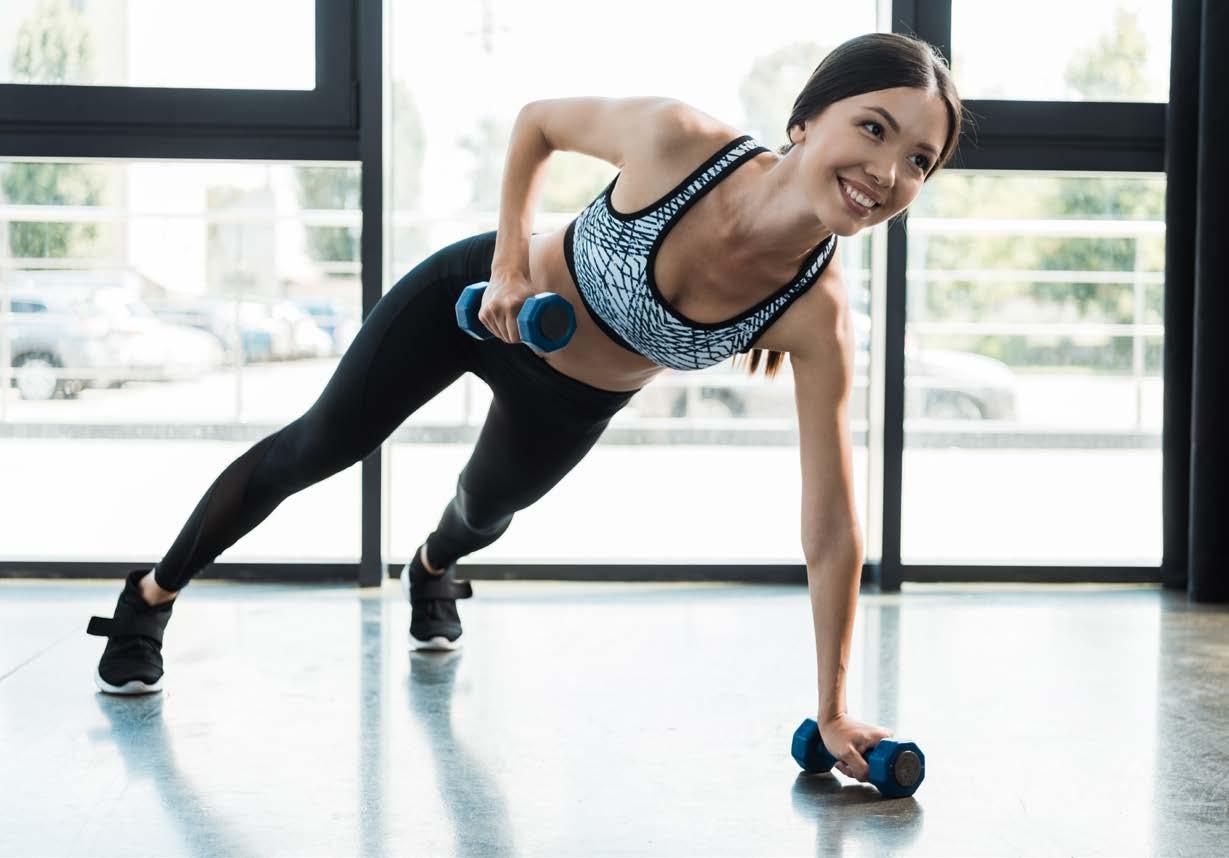
4 minute read
Reap the Benefits of Yoga
Say YES to yoga as a low impact workout. Yoga delivers numerous benefits to the body that far surpass many other forms of exercise. While it may take new yoga students some time to get over the hurdle of having to learn the names of all those poses, once you do, you’re onto one of the most enjoyable and relaxing forms of exercise out there.
Here’s what yoga can do for you if implemented as a routine workout.
Strengthens and stretches the muscles. The “yoga body” tends to be lean and fit, with elongated musculature thanks to frequent, deep stretches.
Releases tension from the body. This is one of the best exercises for stress relief. Yoga combines holding the body in various poses while focusing on mindful breathing.
Balances the nervous system. With so much stress in our daily environment, most people tend to remain in fight-or-flight mode, which takes the focus away from functions like digestion, reproduction. Yoga activates the parasympathetic nervous system by settling the body into a relaxed and restorative state.
Oxygenates the cells. Yoga increases blood flow and brings healing to the deepest recess of the organs and cells.
Improves postures, balance, flexibility and coordination. Yoga primarily works the core which is important for function of the muscles and for improving spatial awareness and control of our movements.
Helps improve quality and quantity of sleep. As a result of activating the parasympathetic nervous system and decreasing accumulated tension in the body, we are able to fall asleep more easily and stay asleep through the night.
Aids in weight loss. People who routinely do yoga tend to notice over time that they have become mindful in their eating habits, and are less likely to over-eat.
Improves mood and increases feelings of wellbeing. Keeping up with a routine yoga practice releases feelgood chemicals in the brain. They experience an increase in positive thoughts, fewer bouts with depression and anxiety, and are better able to concentrate.
Helps alleviate various physical ailments. There is a yoga pose or a yoga asana for nearly every common ailment, from digestive troubles to sinus congestion to insomnia.
5 Yoga Poses for Beginners to Try
New to yoga? If you’d like to give it a try but aren’t sure where to start, your best bet is to head over to Google images to search for how to do the basic beginner poses.
You might also benefit from purchasing a “yoga bible” or “yoga dictionary” which will have illustrated, step by step instructions for hundreds of yoga poses (and yes, there are thousands of yoga poses to try!)
It also helps to learn the Sanskrit word for each yoga poses. These are sometimes used by yoga instructors during class. It’s helpful to know what the words refer to, so that
you’ll be able to easily keep up and move along with each pose.
Look up the following yoga poses, and practice them step by step: 1. Mountain Pose 2. Forward Fold 3. Downward-Facing
Dog 4. Plank Pose 5. Upward-Facing Dog 6. Cobra Pose 7. Warrior 1 8. Warrior 2 9. Humble Warrior 10. Child’s Pose
Tips for Getting Started with Yoga
Yoga works for any body type and fitness level. Many of the more difficult poses can be modified for beginners.
Mindful breathing increases the effectiveness of your yoga practice. Master the basic technique, uijjaye breathing, first. Hold each yoga pose for six slow, mindful breaths each.
Don’t compare your yoga practice to what others are doing. This ancient form of exercise is about presence Many yoga poses flow naturally from one to the next, in a progressive series. This is called an asana. There are yoga asanas for relaxation, strength building, weight loss, and much more.
Why Use Blocks and Bolsters in Yoga
Some people might think that the use of props in yoga, such as blocks and bolsters, is cheating. These items are a helpful way to accommodate for the body’s own ability, and compensate for any limitations. Think of these as a way to stabilize into the pose for a deeper stretch.
If you’re serious about learning yoga, then here is what you’ll need to make your foray into this gentle form of exercise.
A yoga mat. Yoga mats are useful because they prevent you from slipping during the poses, thereby deepening the stretch. Some yoga mats come with a carry bag which can be useful for keeping your mat clean and in good condition. Tight-fitting clothing that provides coverage where you may want it. You can always layer a tee shirt over your tight workout clothing if that makes you feel more comfortable.
A heavy blanket. Your yoga session typically finishes with a pose called corpse, which is a restful pose that provides total relaxation. During this time, you may fall asleep or come close to it. Body temperature may drop, in which case you’ll want to have the blanket to conserve body heat.
A bolster. A yoga bolster is simply a long, firm pillow with rounded edges. The yoga bolster is used as a seat, or as support for the back or front during poses where you’re in a reclined position.
Yoga blocks. Yoga blocks help compensate for those times when our body parts don’t cooperate with the intended yoga pose. For example, a person with a shorter torso may have trouble maintaining a pose like triangle. The blocks help stabilize the body for a deeper stretch.





